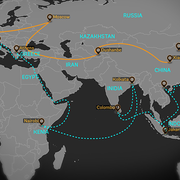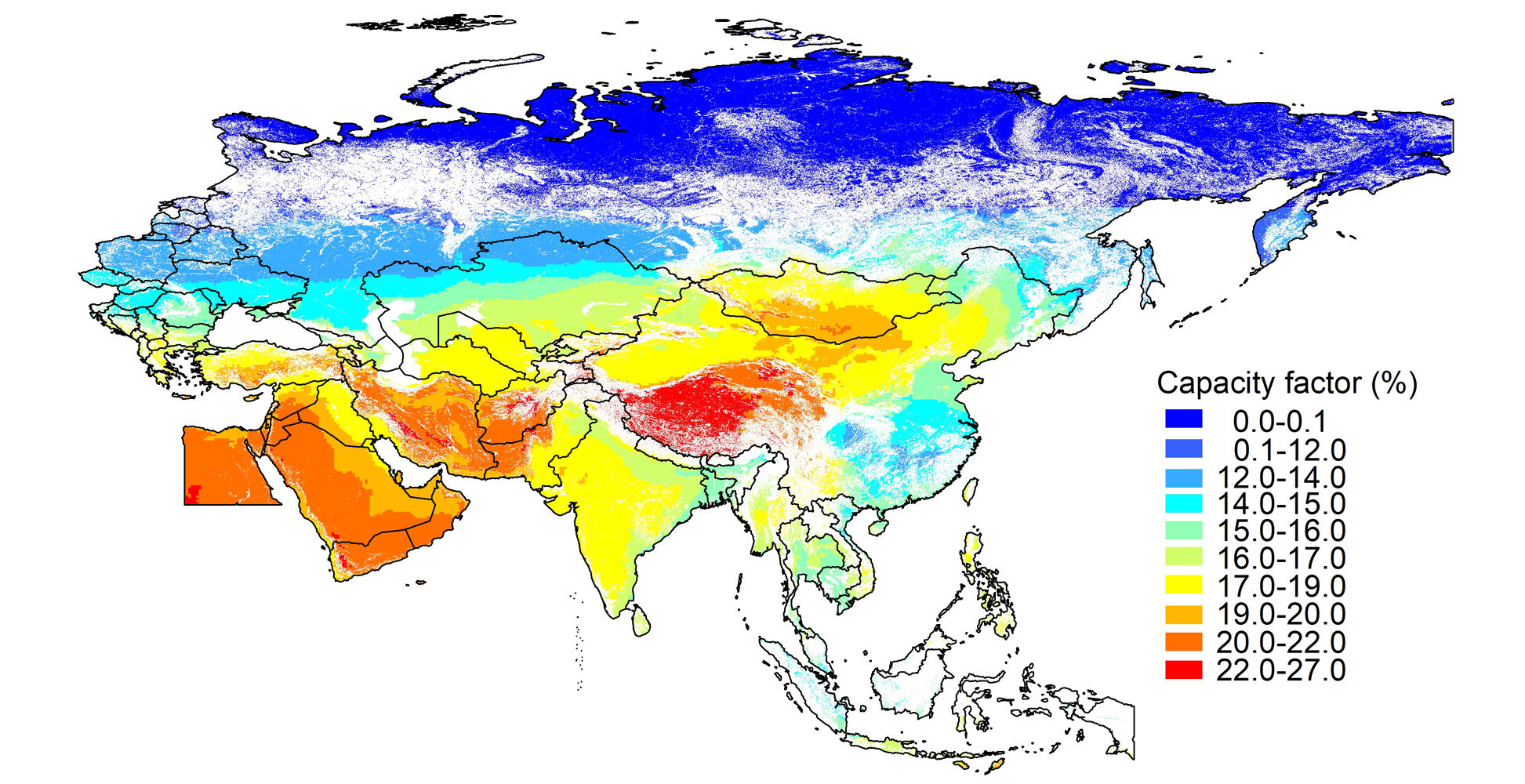
Researchers quantify the region's renewable energy potential
The region covered by the Belt and Road Initiative (BRI) has significant potential to be powered by solar energy, researchers report June 27 in the journal Joule. Less than 4 percent of the maximum solar potential of the region could meet the BRI's electricity demand for 2030. The research suggests a possible solution to reduce BRI countries' need for fossil fuels as they develop. This is the first time the renewable energy potential of the region is quantified.
The Chinese government launched the BRI in 2013, aiming to promote regional development and connectivity. "Belt" represents the Silk Road Economic Belt that echoes the ancient Silk Road, which linked Asia to Europe. "Road" refers to the 21st Century Maritime Silk Road that connects China to South East Asia, South Asia, and North Africa. So far, more than 120 countries in Asia, Europe, Africa, North America, South America, and Oceania are involved.
Constructing hard infrastructure, such as railways, buildings, and power plants, is a main focus of the initiative. However, most of the projects use large amounts of energy, resulting in high emissions. In addition, most countries involved in the BRI are developing countries. A proportion of their population doesn't have access to electricity. As the region develops under the initiative, the need for power is projected to increase.
"If we continue to rely on fossil fuels for energy, it can add significantly more CO2 to the atmosphere, not just this year, but for the next few decades," says co-author Xi Lu at Tsinghua University. "This is not sustainable. If we want to achieve the emission reduction goal set by the Paris Agreement, we need renewable energy."
Many BRI countries, especially those in West and South Asia, have high sun exposure, so Lu and his colleagues decided to assess the region's solar resource. The team selected 66 BRI countries that are connected geographically and built an integrative spatial model to calculate their solar power potential with high-resolution data.
The team first identified areas suitable for building solar farms. These areas would receive sufficient solar radiation and have lower land value otherwise--places like forests and agriculture land are excluded. Then they computed the spacing and packing density of solar panels, which absorb sunlight and generate energy, that would maximize power yield for each area. Finally, they calculated the areas' energy outputs in each hour after considering limiting factors like shading and temperature, which affects the performance of solar panels.
"Our model provides a comprehensive analysis of the region's solar energy potential by taking into account many influencing factors," Lu says. "We also calculated the solar energy outputs on an hourly basis, which is more accurate than previous estimates that use monthly data."
The team found that these countries can generate as much as 448.9 petawatt hour of energy, which is about 41 times the demand for electricity in these countries in 2016. Their 2030 electricity need could be satisfied by converting only 3.7 percent of the region's solar energy. To achieve this, it would require an investment of $11.2 trillion and a land area of 88,426 square kilometers.
"The money is very large," says co-author Michael McElroy at Harvard University. "but if you make that commitment, the energy is free. Plus, the cost of building solar farms is coming down very dramatically because of the technological advances. We project it to become similar to fossil fuels within a decade."
The analysis also reveals a mismatch between the energy potential and the electricity demand. Countries with 70.7% of the potential consume only 30.1% of regional electricity. Therefore, cross-border power transmission grids can be utilized to maximize the benefits from solar energy through exporting surpluses of solar electricity to meet shortages in supplies of electricity elsewhere. To put such a project in action, international cooperation is essential.
"It would be challenging, because different countries have different priorities when it comes to development," Lu says. "But the BRI is an opportunity as it sets up a framework for collaborations between countries, associations, and industries to happen. There are also funds and banks committed to promoting green development of the BRI, which provides financial support."

Because BRI countries span multiple time zones and various climate conditions, such cross-border grids would also help reduce the impact when sunlight isn't available in certain areas.
"This advantage coincides with the 'Facilities Connectivity' concept, which is one of the five cooperation priorities of the BRI," says the first author Shi Chen at Tsinghua University. "In the context of Global Energy Interconnection (GEI), solar power generation is bound to usher in a new development opportunity in the wave of trans-national and even trans-regional power interconnection."
"The solar potential and cooperation opportunities revealed in this analysis is a chance for the BRI countries to leapfrog from their carbon-intensive trajectories to low-carbon futures," says co-author Jiming Hao at Tsinghua University. "The opportunity to decouple future economic growth from increasing carbon emissions does exist."
"Our hope here is that this paper can influence the greening of BRI, so we can try to do the initiative in a better way," says McElroy. "And I'm optimistic about that."
Paper cited: Shi Chen, Xi Lu, Yufei Miao, Yu Deng, Chris P. Nielsen, Noah Elbot, Yuanchen Wang, Kathryn G. Logan, Michael B. McElroy, and Jiming Hao. 2019. “The Potential of Photovoltaics to Power the Belt and Road Initiative.” Joule, 3, Pp. 1-18.
